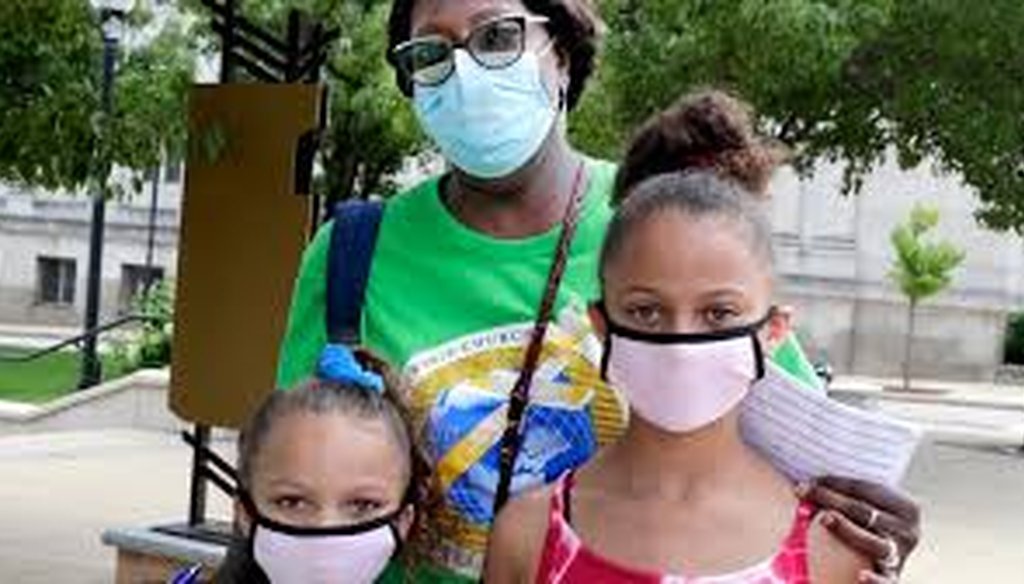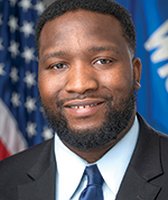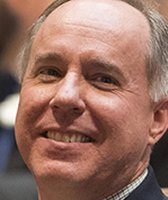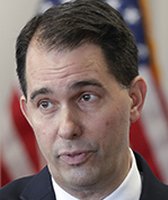Get PolitiFact in your inbox.

Jerrilyn Johnson of Racine and granddaughters Dalani Finley, 7, and Dailynn Finley, 10, are masked while out and about Saturday, Aug. 1, 2020, the first day of Gov. Tony Evers' mandate requiring them to be worn indoors. (Rick Wood/Milw. Journal Sentinel)l
It’s hard to believe, but most of us hadn’t even heard the term "COVID-19" at this time last year. We didn’t have a collection of cloth masks, and we didn’t shudder at the thought of getting together with large groups of people for a sporting event or concert.
PolitiFact Wisconsin has rated dozens of coronavirus-related claims this year. Many of them deal with the state’s governmental response to the pandemic, from Gov. Tony Evers’ stay-at-home order in the spring to his late-summer mask mandate to how well mitigation measures, like contact tracing, are working.
As scientists raced for a vaccine and health care workers raced to determine the best course of treatment, we’ve also learned a lot about how the virus operates.
Looking back at the claims that politicians made to that effect also tells an important story. Republicans, in particular, minimized the severity of the pandemic — comparing it to the seasonal flu, saying young people were not at risk and calling into question whether masks can cut down transmission, even as a bevy of research showed the tool works.
But it’s likely that all of us have learned something about the virus that we didn’t know when the pandemic began, and just as likely that the years to come hold even more coronavirus-related discovery. Here’s our roundup of the top claims we rated about the science behind COVID-19.
Coronavirus is "just the damn flu."
-- Former Milwaukee County Sheriff David A. Clarke Jr.
There’s some overlap between the two viruses. Both can cause fever, muscle aches, fatigue and a slate of other symptoms; both are commonly spread by droplets formed when people cough, sneeze or talk.
But critical differences between them were already established when Clarke tweeted this claim in March. First, there weren’t any vaccines or established treatments for COVID-19 at the time, and COVID is far more deadly than the seasonal flu.
During the most recent flu season, for example, 183 Wisconsinites died of the flu. Since March, more than 4,000 have died of COVID-19.
We rated this claim Pants on Fire.
"Children don’t seem to be getting this virus"
-- State Rep. Janel Brandtjen, R-Menomonee Falls
It is accurate that COVID-19 doesn’t appear to be especially tough on children. In May, when Brandtjen made the claim on Facebook, about 40,000 of the nation’s 1 million-plus cases were in Americans 17 and younger, and in Wisconsin, just under 1,000 were 19 and younger.
But contrary to the claim, children do get the virus, even if it’s at a fraction of the rate of other age groups. Today, more than 1.2 million American youth have contracted it, and 181 have died, according to the Centers for Disease Control and Prevention.
We rated her claim Mostly False.
"Research illustrates a clear correlation between vitamin D deficiencies and (higher) COVID-19 mortality rates."
-- U.S. Rep. Glenn Grothman, R-Glenbeulah
In a May news release, Grothman urged the CDC to examine vitamin D’s impact on the virus. Early research shows that it could curb the severity of COVID-19 symptoms and reduce mortality rates.
More studies are needed to clearly determine the relationship between the two, and to be sure, vitamin D is not a cure for COVID-19 — but the congressman’s release merely mentioned the correlation.
We rated his claim True.
"N95 masks block few, if any" COVID-19 particles due to their size
-- Facebook posts
Armchair epidemiologists were quick to weigh in on the heated debate around whether masks were effective at curbing the spread of COVID-19, including the N95 mask, which is widely used by health care workers treating coronavirus patients in hospitals.
The virus itself is smaller than the N95 filter size, but the virus travels attached to larger particles that are consistently caught by the filter. Even if those particles are smaller than the filter size, their erratic motion and the electrostatic attraction generated by the mask mean they’d still be caught consistently.
We rated this claim Pants on Fire.
"The (COVID-19) cases are going up, but it's because the testing is going up"
-- State Sen. Chris Kapenga, R-Delafield
In late June, Kapenga made the claim to argue that mask mandates were not necessary. But the number of people getting tested for COVID-19 was dropping, not rising, even though cases were increasing at the time,
Experts tied the rise in cases not to increased testing, but to a state fatigued by social distancing measures — particularly an increased willingness by younger residents to head to restaurants, bars and large-group gatherings. Wisconsinites in their 20s went from 20% of the state’s positive tests before June 22 to 40% after that date.
We rated his claim False.
"Taxpayers spent $70,000,000 to develop this drug (remdesivir)"
-- Public Citizen, a progressive advocacy group and think tank
When the antiviral drug remdesivir began making waves as a possible treatment for COVID-19, Gilead Sciences planned to charge U.S. insurers more than other countries, who could purchase it from affiliated generic manufacturers.
Public Citizen, angered by the announcement, tweeted that since taxpayers footed the bill to develop the drug, it should be in the public domain.
Taxpayers did indeed funnel $70 million into the development of remdesivir since it was identified amid the Ebola outbreak in 2015. The Department of Defense, the National Institutes of Health and the National Institute of Allergy and Infectious Diseases, a division of NIH, all have sent millions in federal taxpayer dollars toward the drug’s development and further research.
We rated this claim True.
Wearing masks has been "proven ineffective" in stopping the spread of COVID-19
-- State Rep. Michael Schraa, R-Oshkosh
Throughout the pandemic, Schraa has repeatedly criticized mask mandates and cast doubt through Facebook posts about whether masks can slow the spread of the coronavirus.
Mounting evidence from the CDC, large research universities and prominent labs and medical journals show masks don’t just protect you from infecting others, they can also offer protection for you from others. As that evidence has grown, leaders who previously decried their use have shifted their tone, including Republican governors in Texas, Arkansas and more recently North Dakota and Iowa.
Meanwhile, the evidence Schraa shared against the use of masks when he made the claim in July came from SOTT.net, which is on a list of sites found to be publishing misinformation about the coronavirus, and a video featuring an Infowars host on the site banned.video.
We rated his claim False.
For younger people, seasonal flu is "in many cases" a deadlier virus than COVID-19
-- U.S. Sen. Ron Johnson, R-Wisconsin
This year, more children died from flu complications than from COVID-19, and were hospitalized at higher rates for the flu. In October, when Johnson made the claim, no Wisconsin children had died of COVID-19. (That changed in late November, when a 16-year-old in Madison died from virus complications.) That was in contrast to three pediatric flu deaths that occurred in the most recent influenza season.
However, the flu has historically been able to spread more commonly through children than COVID-19 has, creating more cases, hospitalizations and deaths. To be sure, the fact most schools went virtual in March due to the COVID outbreaak meant it was more difficult for either to spread among schoolchildren.
Experts say more research will be needed before ruling that coronavirus risks are definitively lower for kids.
We rated his claim Mostly True.
No one under 20 has died of COVID-19, and "it has not actually been determined yet" that anyone under 20 can spread it to an older person
-- State Sen. Van Wanggaard, R-Racine
When pressed on this claim, Wanggaard backtracked to say that very few people under 20 had died of COVID-19, which is correct: Only 181 of the nation’s more than 300,000 deaths have been among youth.
But younger people can absolutely spread the disease to older people, who are at greater risk of serious complications. A CDC report on transmission dynamics by age group found that more older people began to test positive after cases rose among people ages 0-17 and 18-24, suggesting at least some younger people passed it to their older counterparts.
What’s more, there’s no scientific evidence to indicate that the virus would behave differently once a person turned 20.
Had Wanggaard said it’s unclear how much young people drive transmission, he would have been more on base. But there’s no question that in some cases, they do.
We rated his claim Mostly False.
Our Sources
PolitiFact


















































